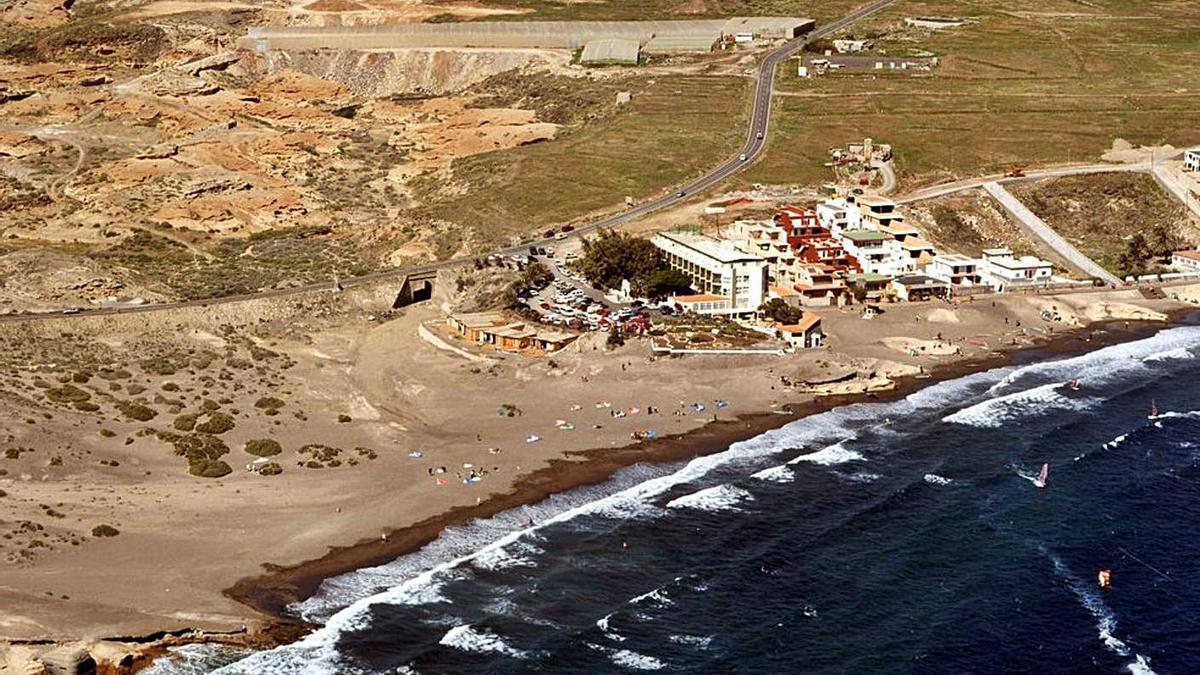
Discharges of unknown origin from piche and sewage keep the beaches of southern Tenerife and La Capita in checkl islander. Yesterday a part of El Cabezo beach –the one known as L-, in Puertito de Güímar, was still closed to the bathroom, when new hydrocarbon stains appeared, as well as Leocadio Machado, in El Médano, and Los Abrigos, these two in the municipality of Granadilla de Abona due to the presence of fecal bacteria. The Güimarero and Granadillero municipalities will analyze the situation again today to determine if they reopen or remain closed.
Meanwhile, the Santa Cruz de Tenerife City Council yesterday withdrew the advice not to bathe in the first part of Las Teresitas beach, from the fishermen’s guild to access 3, after the piche spots seen on Friday disappeared. And for the second day in a row, the beaches of the municipalities of Arafo and Candelaria remain open, which have also been affected by this week’s piche spills.
The competent authorities in the control of discharges, the State Government in the case of hydrocarbons and the City Council of Granadilla in the case of sewage, did not know yesterday the origin of these spots that have disrupted the activity of the coasts in midsummer. The first concentrations of piche, small but expanded off the coast between Santa Cruz and the Güímar Valley, appeared on Tuesday and forced the closure of the Roque de las Bodegas beach, in Anaga. In the following days they spread to other beaches in the capital of Tenerife and the municipalities of Arafo, Candelaria and Güímar, causing provisional closures of the bathing areas.
Pending a new communication from the State Government Delegation in the Canary Islands, which has only clarified that the origin of the pitcher stains is being investigated and that in principle “they are not serious”, it is suspected that they may come from irregular cleaning of ships that pass through Tenerife’s waters. The Marpol international agreement, to prevent pollution caused by ships, obliges ships to eliminate the remains of oil and fuel stored in warehouses in port. However, there are captains and shipowners who try to save time and money by carrying out these tasks on the high seas, causing spills that sometimes reach the coast and have important consequences.
Tenerife is very exposed, like the rest of the Islands, to these hydrocarbon spills, as it is a point of passage or stop for thousands of oil tankers or freighters. At least 1,500 ships that transport crude oil use the island’s waters on their routes to Europe, Africa or Asia. The captains who perform these irregular cleanings on the high seas take advantage of the great difficulty of controlling this dense maritime traffic. The State uses European satellites to monitor these vessels but the small spots are very difficult to detect. In any case, the Delegation has informed that this arrival of piche to the Tenerife coast is still being investigated.
As for the sewage discharges in Granadilla, the City Council assured yesterday that it does not know its origin. Today the results of the new tests carried out on the beaches of Leocadio Machado – the beach of El Médano that concentrates kite surfing activities – and Los Abrigos will be known to determine if it maintains the closure or opens them to bathers. The affected municipalities have expressed their concern about spills that alter the use of the beaches in the middle of the summer period.
















